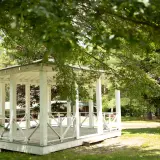History all around us
Adirondack history goes way back. While we could write many books (and, indeed, many people have) on the histories of each community in the Adirondack Hub, Schroon Lake can be seen as a microcosm of the entire Adirondack Park. We'll start there.
The town of Schroon Lake was first settled around 1800, north of the current Schroon Lake hamlet. However, there is a claim that the town was occupied during the colonial period as a French colony. The origination of the name "Schroon" is not precisely known, though some believe it is derived from a Native American word for large lake. Others contend it was named by French soldiers in honor of the Widow Scarron (Françoise d'Aubigne) who was previously the wife of noted French author and playwright Paul Scarron. She was subsequently the Madame de Maintenon and second wife of Louis XIV of France.
Officially formed in 1804, the town of Schroon was originally part of the town of Crown Point. Then the town was partitioned to form the newer town of Minerva in 1817 and in 1840, part of Schroon was returned to Crown Point.
Industry
Affordable land, abundant water, fish, game, and first-growth timber attracted early settlement. Schroon grew quickly, benefitting from the Old State Road (US 9, currently), which ran through the town and on to Canada, and after 1840, from the road to Carthage in Jefferson County. Saw and grist mills soon appeared, as well as a tannery and a distillery.
Lumber was the backbone of the early economy. As land was cleared for settlement, logs not needed locally were sent down river to Schroon Lake and on to Glens Falls. Although attempts were made to mine and forge iron in Schroon, the veins were not sufficient to make it profitable.
Tanning leather was the principal industry in Schroon in the 1850s and 1860s as in neighboring North Hudson and Minerva, but over time, the high cost of transportation outweighed the benefit of having accessible hemlock. Eventually, chemical methods of tanning replaced the natural process.
Tourism
Between 1875 and 1910 the Adirondacks were flourishing as a tourist resort area. This was the Gilded Age of the Adirondacks. Many hotels, such as the famous Leland House in the town of Schroon, were built during the Gilded Era. In 1875 there were 200 hostelries including elegant inns and large hotels throughout the Adirondacks. The town of Schroon had its share to contribute to the region.
In 1872, the Leland House was built on a 6-acre parcel by Thomas Leland. It was one of the largest and grandest hotels on the lake; it was three stories high and could accommodate nearly 300 guests. The majority of the guest rooms were located where the hockey rink is today. On October 31, 1914, it caught fire and was destroyed. In 1915, plans were made for the Leland House to be rebuilt. It was completed in one year at a cost of $125,000. It caught fire again on December 16, 1938, but continued to operate until 1952.
Large hotels and children's camps clustered around the lakes: Paradox, Pyramid and Schroon. All of the hotels filled up over weekends when parents came to visit their children. Although the depression took its toll on tourism, greater damage was done by polio epidemics. The camp directors decided to allow only one parental weekend a summer to reduce the spread of the disease. This took a tremendous toll on the hotels. Schroon Lake was also the former home to the world class Scaroon Manor Resort which opened in 1920.
It was a luxurious resort catering to clientele interested in fine dining, quality entertainment and outdoor fun. It featured an amphitheater, white sandy beach, and over 300 acres of gardens and landscaped walkways. For outdoor recreation, it offered a golf course, tennis courts, baseball diamond, basketball courts and water sports. The Scaroon Manor was also the site for the 1957 Warner Brothers movie "Marjorie Morningstar," which starred Gene Kelly, Natalie Wood and Ed Winn. The Manor closed in 1962 and was eventually sold to the state of New York in 1967. It is now used by the state Department of Environmental Conservation as a public campground and day-use area.
After beginning a successful summer music program in nearby Hague in 1915, Oscar Seagle bought a large farm on Charley Hill in 1922, establishing the Seagle Music Colony (now Seagle Festival), a training school for vocalists. Seagle Festival students still give concerts in Schroon and other Adirondack locations throughout the summer. Wonderful music can also be heard in summer bandstand concerts, a tradition started in 1958.
Transportation
The tourist business developed along with the expansion of the railroad line. Prior to that, guests were brought up the lake by steamer. During the 1880s visitors from Saratoga came to the Adirondack region by train to Riparius. They would then board the stagecoach and travel to the southern end of Schroon Lake to Pottersville and board the lake steamer called the Evelyn, which ran from June thru October; the stage ran to Riverside the remaining part of the year.
Two steamboats that were favorites for the quests were the steamships Evelyn and Effingham. Both operated during the vacation months offering scenic tours of the lake. In the off-season the steamboats would pull the log booms from the inlet to the outlet of the lake where the logs would continue to float down the Schroon River until they reached the sawmills in Warrensburg and Glens Falls.
Prior to the construction of the Northway (I-87), US Route 9 was the major north-south highway between Albany and Montreal, Canada, which made Schroon Lake a convenient stopping off point for travelers to purchase gas, lodging, and meals. Today's travelers now have the convenience of two main, north/south roadways to reach Schroon Lake.
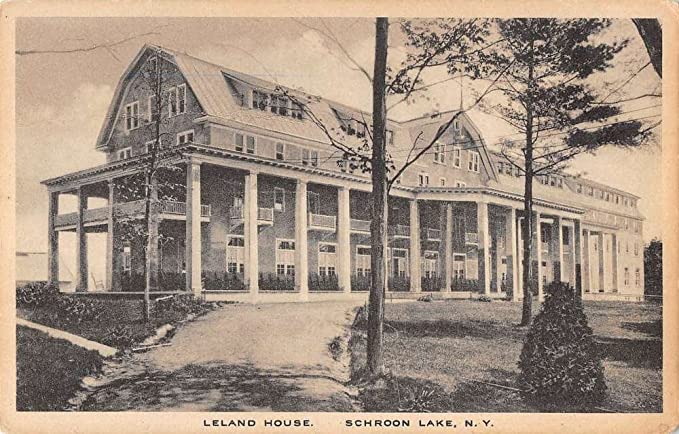
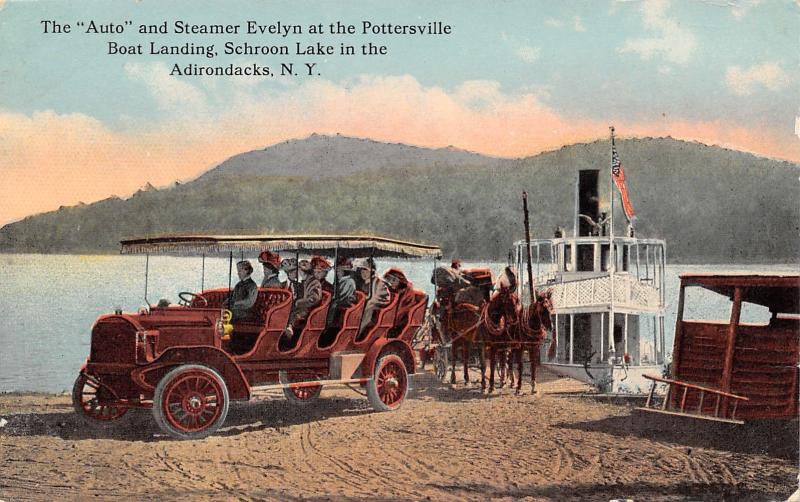
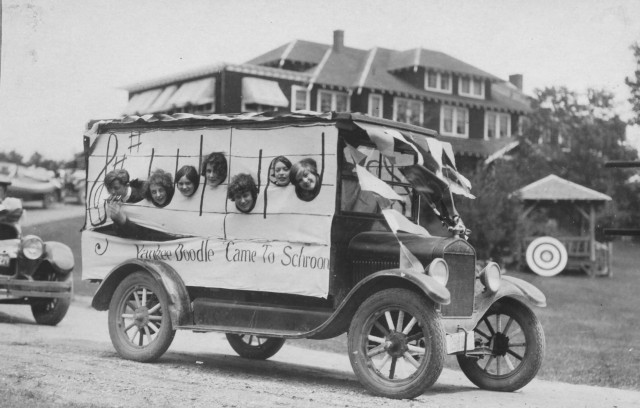
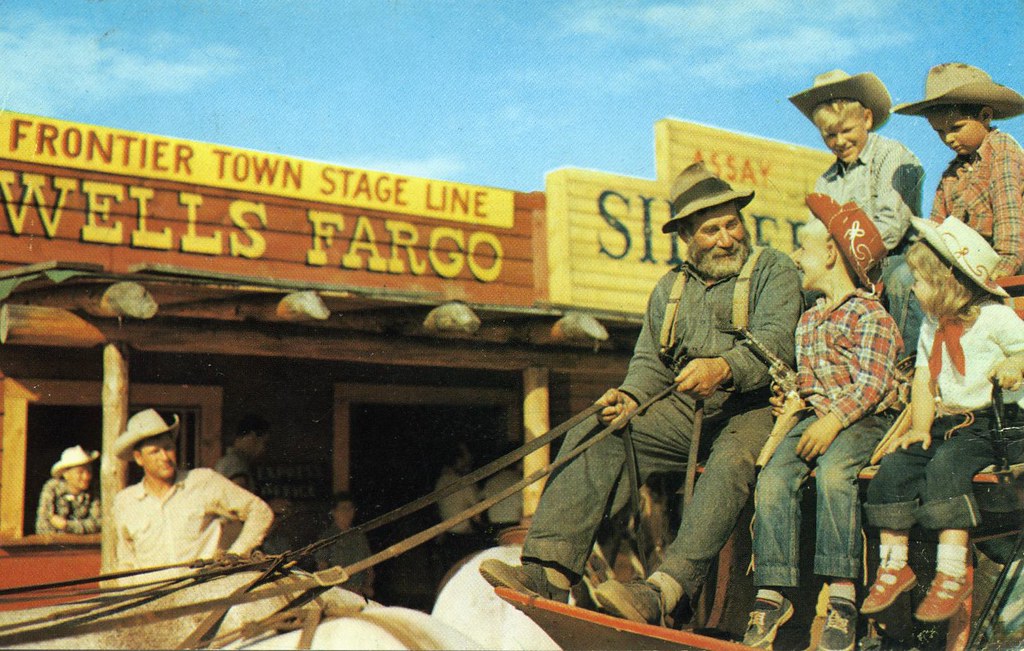
Present day
Today, Schroon Lake is still a thriving, year-round community. For more detailed historical information, please stop by the Schroon-North Hudson Historical Society. Other Adirondack Hub communities have historical societies as well that can help tell their unique stories and histories. Minerva and Newcomb each have dedicated spaces to preserve history and connect with visitors and locals.

